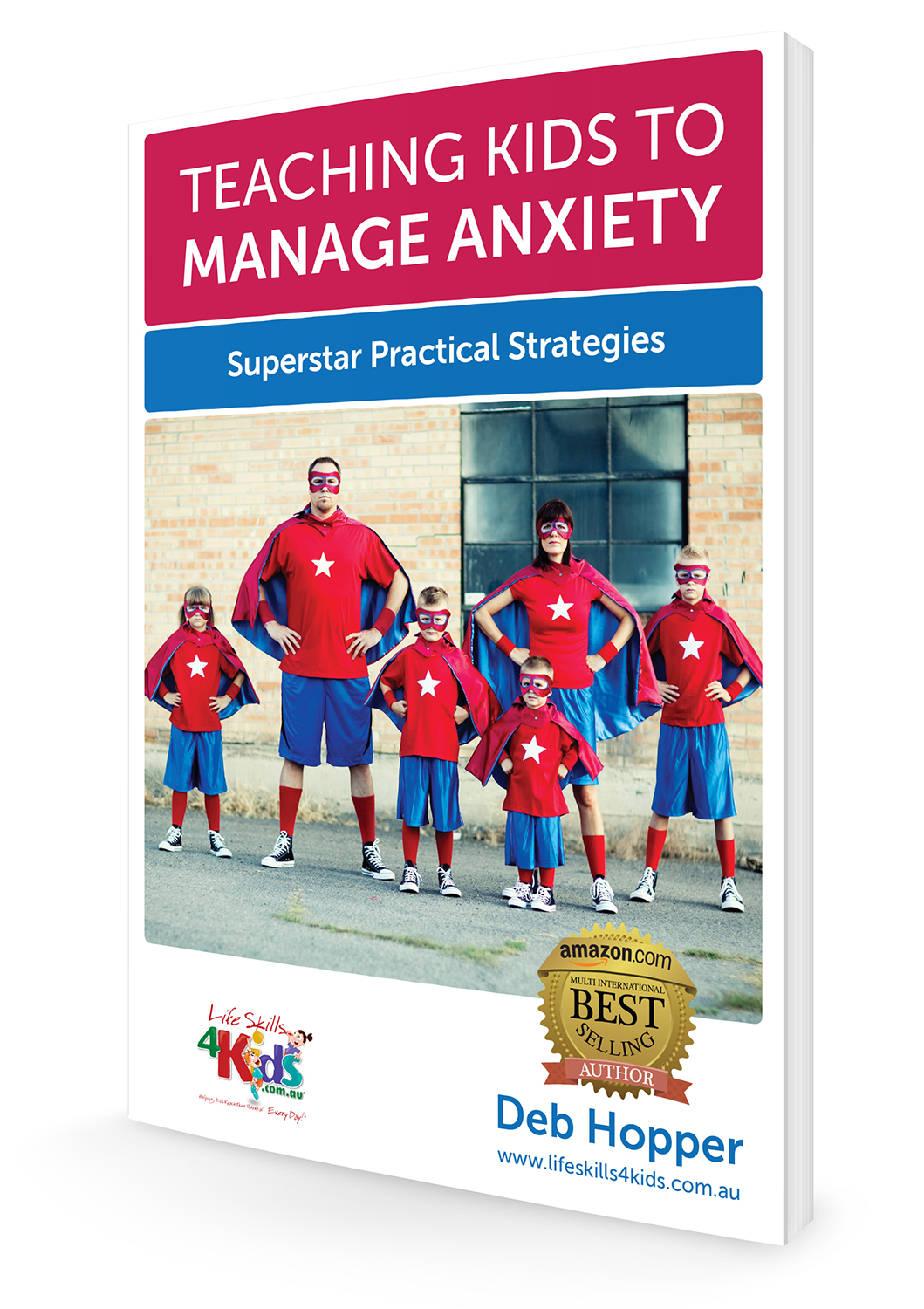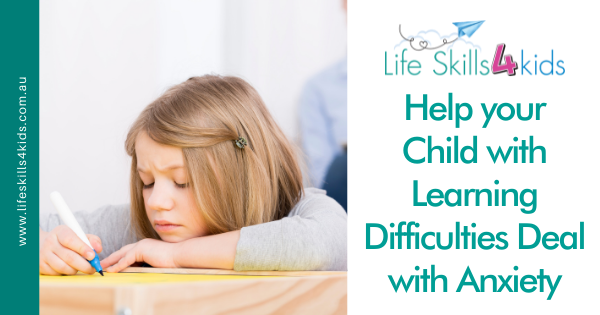How can you find out if your child is displaying signs of anxiety? At Lifeskills4kids, we are passionate about helping our young people deal with being anxious. For a deeper understanding of the impact of anxiety on your child’s happiness, have a look at this article.
Ok, so you think your child may be showing signs of anxiety, what can you do about it?
How to help your child with learning difficulties deal with anxiety
#1 Environment
A Sensory Safe Space (this could be a calm space or an active one)
- For further information about how important a safe space can be, have a look at our article on helping kids with anxiety.
- Remember that you can create a safe space wherever you want to – it could be at school, at home, in a special place on holiday or at a frequently visited place eg, grandparents home.
- Include elements from all of the five senses to help your child cope from a multi-sensory perspective.
- To help your child with learning difficulties deal with anxiety, decide if they would benefit from having a calm safe space or an active safe space. Most kids will value having both options if it’s possible.
- Remember also to have clear agreed rules between yourself and your child, so that you both know who is allowed into the space and when it can be used.
- Check out our article on a child’s safe space.
#2 People
Kids with learning difficulties can take longer to process information and longer to learn to trust people.
It is important, to give your child the greatest chance of success in dealing with anxiety to build a team of familiar people around them.
All human beings thrive on love and it is important when kids are struggling with anxiety that they feel very safe, secure and loved within the team of people supporting them.
Another consideration for kids to feel safe is to agree throughout the team how to deal with each element of anxiety that the young person may be experiencing. To be able to have an agreed strategy for each common anxiety will provide the young person with a clear and easy-to-read set of boundaries.
#3 Strategies
Pictures can be worth a thousand words
At LifeSkills4kids, we have several articles to help you with using visuals to help your child with learning difficulties deal with anxiety.
For more information, have a look here:
- Start here for a general overview of visuals (this article is specifically about kids with autism, but visuals can help ALL kids).
- Visuals can also be used to help emotional well-being for your child, which will help with anxiety.
- Visuals will also be covered in our article to be published on 19th April, it will turn up here on that date.
Sensory Toys & Familiar Objects
All kids have favourite toys and certain things that they will not leave the house without having with them. Young people with learning difficulties are just the same – they might just need some help from you to remember to take these precious items with them.
There are a variety of sensory toys available that can also help your child with learning difficulties deal with anxiety. You will need to experiment with different types of sensory toys to find out which ones your child is most comforted by.
Generally, light-up and spinning toys can help to make a child with learning difficulties less anxious. These sorts of toys will help the young person to ‘zone out’ of a stressful situation, by focusing instead on the toy.
It is also possible to buy chewy toys which can be very helpful too. The monotony of chewing can also be a good way to focus on something else and having a chewy also provides the user with something to do with their hands.
Make a Sensory Goodie Bag
It can be a lifesaver for both you and your child to have a sensory goodie bag immediately available in every situation.
My recommendation would be, whenever you find toys/objects which calm and soothe your child, buy TWO of them! One for immediate use and one to add to the Goodie Bag for any potentially stressful situation.
“Safety Blankets”
A great way to help your child with learning difficulties deal with anxiety is to use a weighted blanket or a large piece of lycra to wrap them in. Sometimes, anxiety can be reduced by providing your child with the feeling of a ‘deep’ hug – weighted blankets and lycra are great tools to be able to achieve this feeling. (They also have the added bonus of providing a deep hug without the direct involvement of a person, so that the young person does not have to give up their personal space).
Teaching Kids About Feelings
We have used the most current research to create our “Just Right Kids Technique”. For more information on this, check out this article. We looked at different models and took the most effective parts of each of them to design the Just Right Kids Technique.
We all want Just Right Kids – this is when your child’s emotional well-being is in the optimum space for whatever situation they are in.
The beauty of using Just Right Kids is that you can help your child with learning difficulties deal with anxiety by finding out about how they can manage their own feelings.
Get Help from Deb Hopper (Occupational Therapist & Blog Owner)
Workshops You Can Access:
- Sign up for Deb’s training workshop to help your child with learning difficulties deal with anxiety
- Check out Deb’s upcoming training on strategies to help with anxiety for kids with physical difficulties
- Look here for Deb’s workshop to help kids who have social anxiety issues
Teaching Kids to Manage Anxiety: Superstar Practical Strategies (eBook)
Kids today are growing up in a fast-paced world where information and opportunity overload can be overwhelming.
Based on many years of clinical experience as an Occupational Therapist, Deb Hopper has been using her Just Right Kids® Model to teach children to communicate and manage their stress and anxiety by:
– Identifying their “body speed”,
– Understanding their stress triggers, and
– Implementing simple strategies to reduce anxiety and stress.


